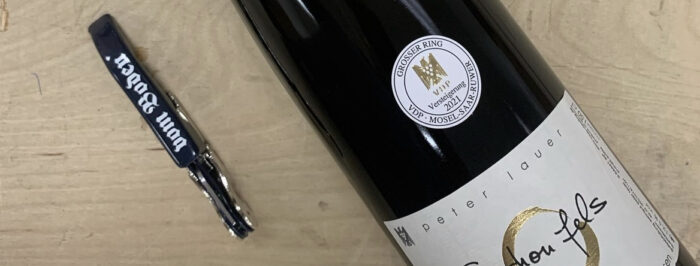
The German wine auctions, held once a year in the fall – normally in September or November – are little understood in the U.S.
While the easy selling line is something like, “this is your chance to buy the greatest and rarest wines of Germany” – and that line is 100% true – I think it undermines, or at least takes a detour around, the beautiful human tradition of the event. It pushes to the side what’s really important about all this; like selling the Statue of Liberty based on the incredible views of the city it affords.
To understand the deeper meaning of these auctions, however, we have to know a bit of history. The German auctions – organized by growers’ associations and not by commercial auction houses – began in the mid-nineteenth century. Their purpose was simple: To strengthen the position of the small estates and to honor the very basic and magical fact that some barrels are better than other barrels. What’s important to remember here is that through the 19th and even in the early 20th century, the majority of winemakers worked their tiny plots, made relatively small amounts of wine which they sold, by the barrel, to the negociants and large bottlers who would then bottle the wine, label it and sell “the finished product.”
This process required the negociants and large bottlers to send tasters to these small growers, to sample all the barrels and negotiate the pricing and purchase. Now, as anyone who has barrel sampled knows, each barrel has its own identity. In other words, despite all our scientific advancement and technological sophistication, we have not mastered the complexity of fermentation, the unfathomable influences of a barrel, the life of a certain yeast in a certain year, the indelible fingerprint of terroir. Every barrel is just not created equally, even if the winemaker herself doesn’t know why one tastes different than the other. It just does, and that fact is fucking magical.
The tasters knew this; the growers knew this. The auctions gave the growers the chance to get the best price for the barrels – especially for the ones they thought were extraordinary.
Today, the top growers bottle their own wines. Yet the auctions continue as a way for the growers to honor the tradition and to honor the fact that some barrels, some vineyards, some parcels, are just different, better – special. Of course, the easy, rational, simple, logical and commercial thing to do would be to blend all these barrels in a larger tank, averaging out your wine as it were. Frankly, this is what happens 99.9% of the time with winemaking around the world (and there are interesting philosophical arguments as to why this is also a sort of fascinating, beautiful truth).
The German wine auctions, however, represent the 00.1% – the whole process is an acknowledgment of how complicated, mysterious, beautiful and ultimately unknowable, the act – the art – of winemaking really is. It is a nod to the tradition of how wines were discussed and sold before we got so ****ing efficient and slick.
The German auction bottlings are unique – these are the bottlings the growers themselves believe represent their top, top wines. They will normally have a round auction sticker (see below) and a unique AP number. They are not sold through normal retail channels, though retailers can of course buy these bottles and sell them if they like.

You may have gathered this already, but I love it. It is a beautiful, honest and eccentric expression of the human spirit and of the complexity of nature.
We are proud to offer complete consulting, bidding and logistics services to clients in the U.S.
For more information, including the most current auction books (normally released only a few weeks before the auctions), basic bidding instructions and more, email orders@vomboden.com